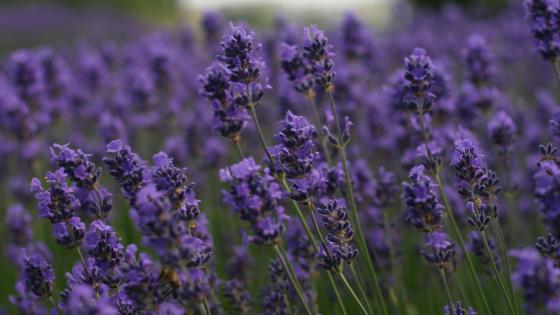
Lavender
Lavender
Lavender (Lavandula) is among the best-known of aromatics. Lavender has been used since ancient times for aromatic and medicinal purposes, and it maintains popularity because of lavender ingredients in essential oils, perfumes and other personal care products. There are more than 20 commercially important lavender cultivars, with climate and plant culture requirements varying among some of the major lavender types. Large-scale lavender production in Kentucky is limited by climatic requirements (low humidity and low winter temperatures), poorly drained soils and the scale requirements for essential oils processing. Lavender could be suited as a specialty/niche crop for some Kentucky farms, especially those with ongoing agritourism enterprises.
Key Requirements
| Land | Low |
| Labor | High |
| Capital | High |
Take the HortBizQuiz to see how much Land, Labor, and Capital you have for your operation.
Markets
- Direct to Consumer
- Farmer's Market
- U-Pick
- Value-Added
-
Restaurants
Pests & Disease
Lavender in Kentucky, while generally resilient, can face challenges from pests and diseases due to the state’s humid climate. Common pests include aphids, which can sap nutrients from plants and attract sooty mold, and spittlebugs, whose frothy deposits can hinder growth. Root-knot nematodes may also damage lavender by infesting the roots, leading to stunted growth. Diseases like root rot, caused by overly wet soil and poor drainage, pose a significant threat in Kentucky’s clay-heavy soils. Fungal infections, such as lavender shab (Phomopsis lavandulae), can cause dieback and stem discoloration. Proper site selection with well-drained soil, adequate spacing for air circulation, and regular monitoring can help mitigate these issues and ensure healthy lavender growth.
Costs and returns are presented as estimates. They will vary based on your farm and markets.
Costs and returns are presented as estimates. They will vary based on your farm and markets.
Challenges
- Labor is needed for weed control.
- Lavender is susceptible to freezing.
Opportunities
- Events that focus on lavender, such as festivals and field days, have contributed to the growth in the agritourism industry.
- Lavender has economic profit potential in Kentucky and surrounding regions if there is a sound marketing plan and if the fixed costs of drying lavender (processing/drying, essential oil distillation and land costs) can be distributed over other farm enterprises.